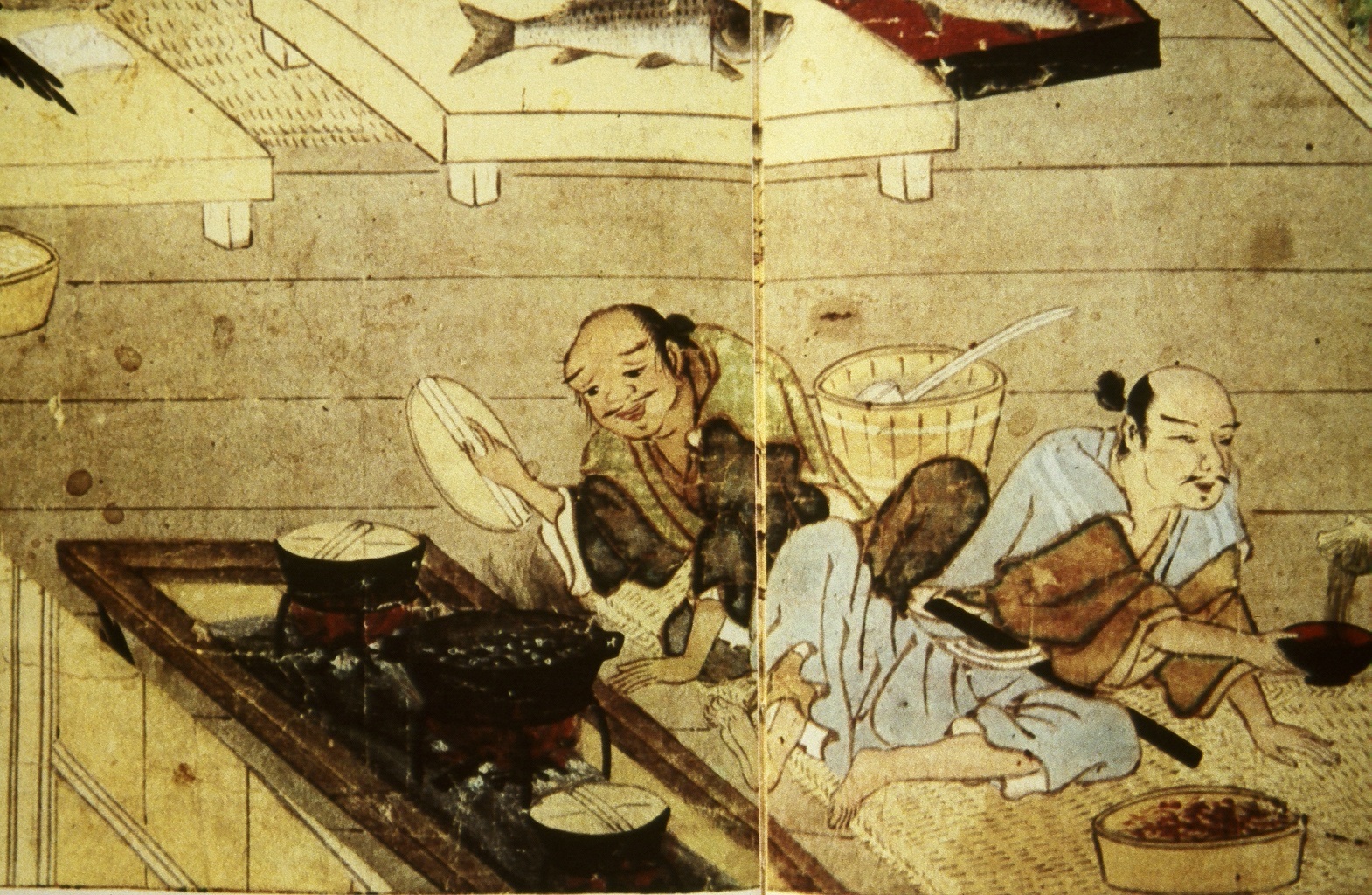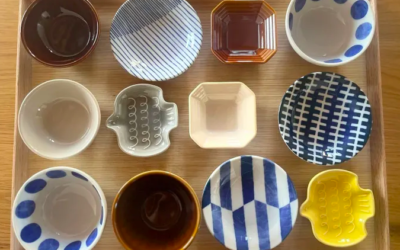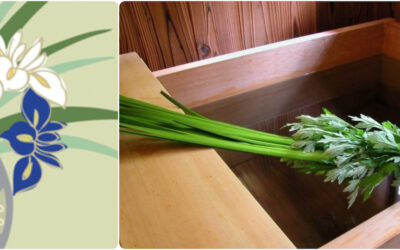
16th century scroll (Shuhanron Emaki) 酒飯論絵巻
落し蓋
Otoshi-Buta
Dropped Lids
Used in Japanese kitchens for centuries for preparing nimono (simmered dishes), otoshi-buta lids drop down to sit directly on the food, rather than on the rim of a pot. Fuel-efficient as they evenly distribute and trap in heat, the bubbling broth in the pot is forced to continually recirculate as it hits the underside of the dropped lid. The result is food that remains moist while excess liquid reduces, concentrating flavor.
In recent years, many kitchen gadgets made of heat-resistant silicon have come on the market. The pink silicon lid pictured here resembles the face of a pig. Word play (the Japanese word for pig is “buta”) has added to the popularity of this modern dropped lid.
The best lids are made from a cedar-like wood called sawara; wood does not absorb heat the way metal does so the lids don’t stick to the food.
Lids come in various sizes. Chose a lid that is slightly smaller in diameter than the pan or pot with which it will be used.
In addition to simmering, dropped lids can be used as a “press” to flatten ingredients as they sear in a skillet.
DOWNLOAD guide and recipe: simmering with otoshibuta + Skillet-Seared Eringi with Sansho




